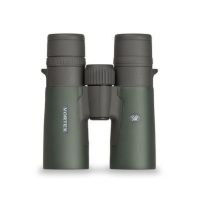
MeatEater Season 10, Part 2 is live on Netflix right now. Although the crew goes all the way to Hawaii this season, the most exotic adventure might have taken place right here in the Lower 48. In the final episode, they chase ibex in the mountains of New Mexico.
Ibex are an introduced species released by New Mexico’s game department in 1970. The herd started with just 42 that came from Iran. Today they boast a population 400 strong—the only herd of wild ibex in North America. Although this was a unique hunt, a lot of the gear used is the same stuff that helps them fill the freezer all year long. Here are some notable pieces of equipment from the ibex hunt.
FHF Gear Bino Harness Pro-M This is the ultimate, do-it-all bino harness that the crew uses on damn near every hunt—whether that be for whitetails in Texas, turkeys in South Carolina, or mountain goats in Montana. It’s a simple design that makes accessing optics easy—there are no loud magnets, zippers, or velcro.
What really makes this harness so versatile is the laminated MOLLE panel on the underside of the pouch. This allows you to attach a hand muff for cold weather, bipod for rifle hunts, bear spray for grizz country, and more. Available in many patterns and colors, there’s an option that’s sure to fit your needs, whether you’re a whitetail bowhunter in Michigan or desert ibex hunter in New Mexico.
Vortex Razor UHD 10x42 According to Steve, these binos from Vortex are “the best they’ve ever made.” He thinks they rival the top European optics on the market, even though these are half the price.
It was an easy choice toting these around in New Mexico, given that ibex blend in really well with the sky islands of the American Southwest. We wouldn’t blame someone if they elected to take a more powerful pair, like the 12x50s or 18x56s, but the 10x42s are a safe bet for nearly every hunt in North America.
Vortex Razor UHD 4000 Rangefinders can struggle when the sun is high and low, unable to get reads off of glares or dark objects. The Razor HD 4000 comes through with precise yardages every time though, regardless of the time of day.
It can provide reads on reflective surfaces out to 4,000 yards and deer out to 2,500 yards. The Razor compensates for your angle, which is a must-have when hunting in any sort of elevation. This is the entire crew’s rangefinder of choice, from our resident whitetail nerd Mark Kenyon to America’s best elk caller Jason Phelps.





